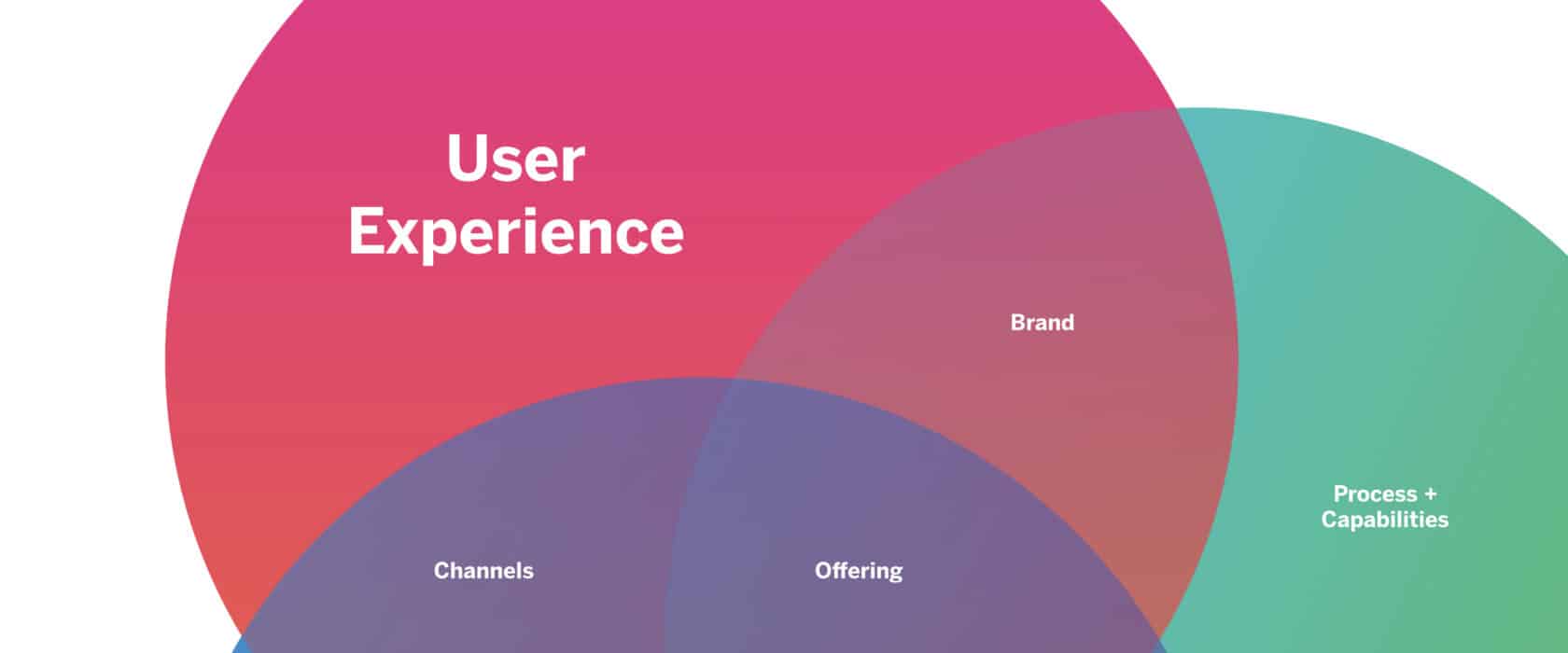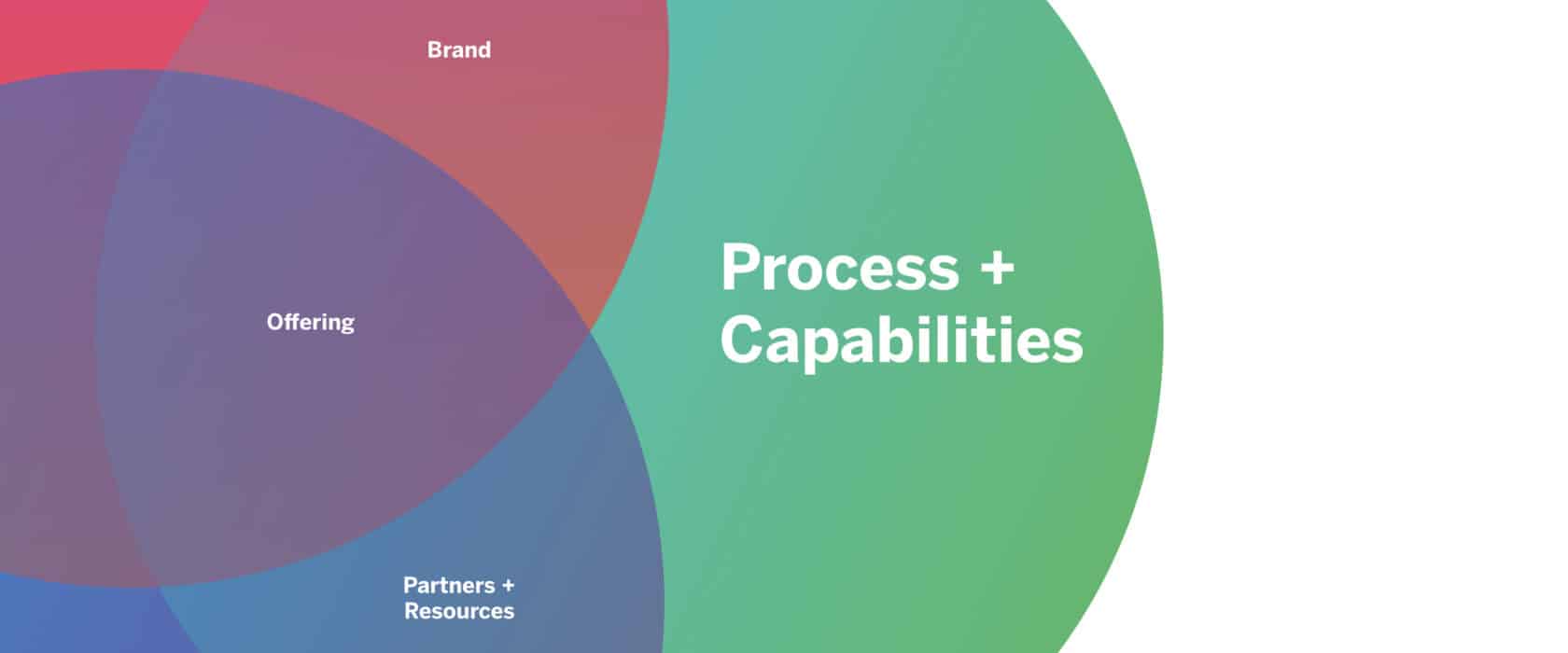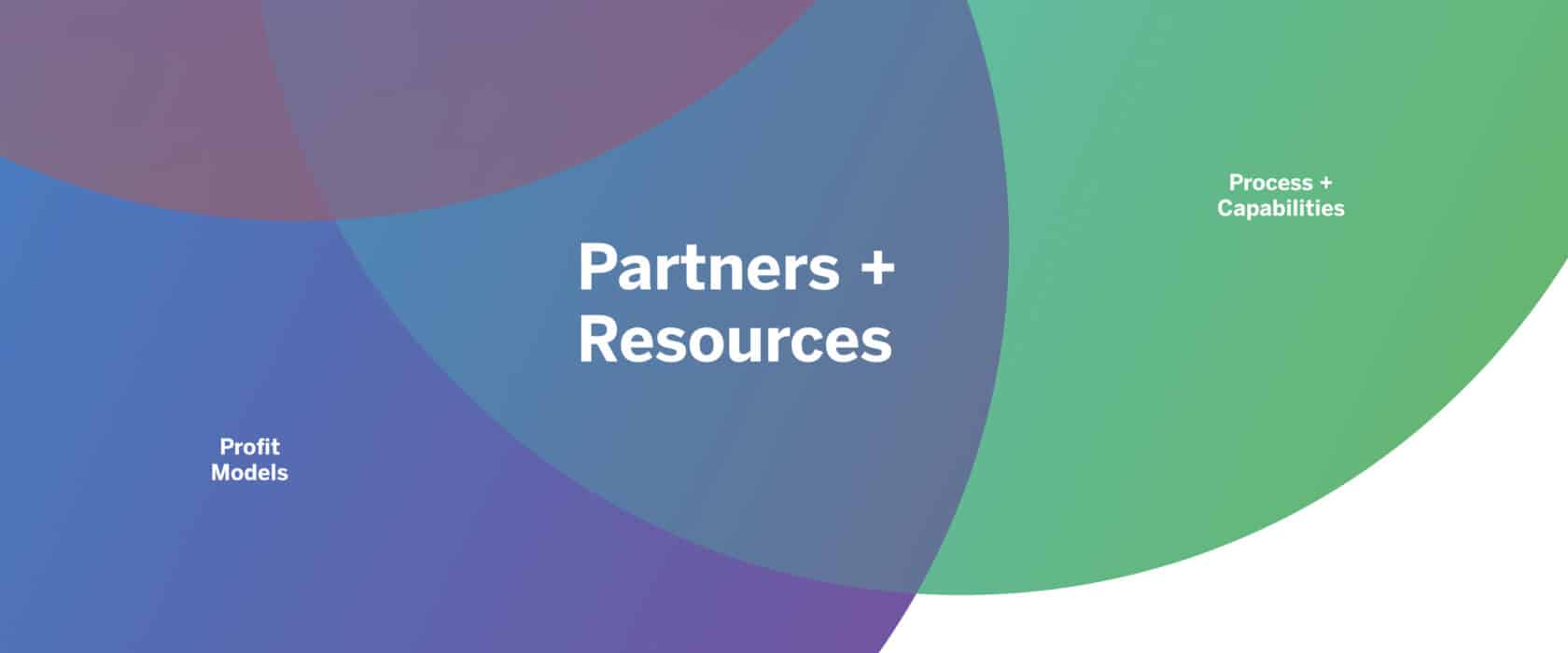Insights
The 7 Elements of Design Innovation™

Design Innovation Overview
For design innovation to succeed, it has to be Desirable, Possible and Viable. Desirable – wanted by users. Possible – technically feasible. Viable – able to support future business goals. We’ve been doing innovation consulting for more than 20 years. We’ve learned that it’s critical to understand, explore, and prioritize the overlaps between these three lenses to successfully innovate.
We call this the 7 Elements of Design Innovation™. It’s a tool to ensure that every new design innovation, or human-centered offering, is integrated into business strategy.

The Key to Successful Innovation: Systemic Thinking
In traditional corporate structures, it’s common for teams to focus on just one or two of the seven elements in isolation. At IA, we consider all design innovation elements systemically — helping our clients collaborate across their organizations to create new offerings that end users value, stakeholders can feasibly implement, and leadership can be confident will deliver business impact.

User Experience
What to ask: What are the user’s wants, needs, and potential?
What it is: User experience design begins with determining our most important users and then diving deep to understand their wants and needs. By observing patterns of current activities, workarounds, and aspirations, insights are derived to guide the creation of new offerings.
Whether insights prescribe entirely new business models or re-tooled elements, a foundational user understanding enables concepting, design, and mapping of ideal future experiences.
User Experience Owners: Consumer Insights, Digital & User Experience

Process & Capabilities
What to ask: What systems and internal capabilities will we leverage or evolve?
What it is: Process and capabilities design are paramount in building a culture focused on design innovation. Through capabilities design, a company’s financial, physical, intellectual, and human resources can be connected in more agile and elastic ways to inspire dynamic and unexpected value creation, improving core functions and driving a healthier workplace.
A company’s core process design can also leverage a user-centered approach to challenge organizational conventions and prototype new approaches to corporate strategy, R&D, knowledge management, and skills development.
Process & Capabilities Owners: Engineering, Manufacturing, IT/Technology

Profit Models
What to ask: What will users value and how will we derive profit?
What it is: User-centered profit models are based on a rich understanding of what users truly value. By uncovering genuine motivations for purchases, new and tailored revenue models can be established. Often, multiple models are created to provide users maximum access to offerings while keeping competitors at a distance.
Considerations around pricing are driven by user value creation and willingness to pay, versus competitive pressures. Because this framework is user-centered, rather than competition-driven, typical purchase patterns are routinely disrupted, delivering new options and opportunities for buyer engagement.
Profit Models Owners: Corporate Strategy, Finance

Brand
What to ask: What relationship will users want to have with us?
What it is: Strong brands are based on establishing meaningful relationships with users. The scale of most corporations necessitates a broad range of brand interaction methods — from one-to-one conversations to mass communication.
Regardless of tactic, a company’s communications, language, imagery, and iconography must be consistently aligned with user values. Key innovations in the Brand element explore brand position, brand image, customer relationship management, and customer engagement.
A coordinated, user-centered brand practice will distinguish offerings, maximize recognition, and drive preference among current and future users.
Brand Owners: Brand Management

Partners & Resources
What to ask: What user needs will be served if we leverage other’s capabilities and profit models?
What it is: The value we create for users should not be limited to our own process and capabilities. From infrastructure to open innovation, collaboration with complementors or competitors can disrupt a market by quickly enabling access to new expertise, customers, capital, and other resources.
Networks can be short term alliances to execute a special project, or enduring partnerships to establish new entities. These relationships can reduce cost and risk or enable the creation of otherwise unfeasible offerings. The Partners & Resources element seeks to tap latent marketplace potential to deliver lasting user and business value.
Partners & Resources Owners: Strategic Partnerships, Sourcing

Channels
What to ask: Where will users engage throughout their purchase journey?
What it is: Of all seven elements, user expectations are perhaps changing most rapidly in Channel. Physical stores are polarizing: some becoming physical showrooms for their e-commerce competitors; others, highly immersive flagships for powerful brands. Users demand both speedy self-empowered check-outs and highly tailored consultation.
Through the right mix of technology, experience, brand, and commerce, channels can deliver on users’ fragmented tastes and time constraints. This element considers trade-offs of owned versus partner; direct versus indirect; physical versus digital; as well as earned versus paid media to build awareness and motivate user purchase.
Channels Owners: Sales, Strategy

Offering
What to ask: What platforms, products, and services will be rewarding to deliver?
What it is: User-centered offerings span products and services that align to deliver compelling and seamless experiences. Each product or service within an ecosystem executes against one or more specific unmet need. Individual offerings deliver a quality experience, yet they become better together.
Whether delivering product enhancements or truly disruptive offerings, this platform approach drives ongoing sales, establishes competitive barriers, increases presence in channels, builds brand equity, and enables the company to create longer-term customer relationships.
Offering Owners: CEO/Senior Leadership, Product Management
A Practice of User-Centered Business Design
IA Collaborative’s Seven Elements of Design Innovation™ combines human-centered, iterative design thinking with holistic, rigorous corporate strategy to engage and connect all areas of company leadership.
By activating this systemic framework, leaders can confidently place strategic bets on future options, better serve their users, and enable new business growth.
Interested in learning more on how IA Collaborative enables innovation for some of the leading businesses in the world? Contact us.
Email Signup
News and Perspectives
"*" indicates required fields